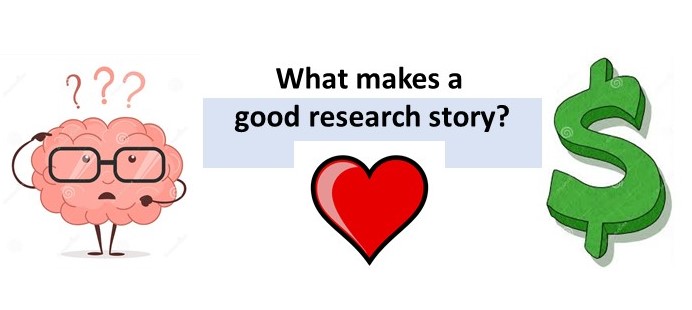
Throughout my career in science communication, I’ve regularly been asked “what makes a good research story?”
Luckily, I have worked in institutions that encouraged their researchers to develop research ‘for the real world’, both in Australia and overseas.
These institutions have had direct contact with their communities, and through intermediaries such as officers in government agencies, teachers in community schools, or journalists in the media, so their research often could tell a relevant, interesting story.
However, even in this positive situation, I was still asked by many researchers, “what makes a good research story?”
Over the years, I have honed my suggestions to three ‘Hs’: head, heart and hip pocket.
A ‘head’ story makes people think – it has an intellectual basis to it. The story makes an audience member say, “Wow, I didn’t know that, that’s really interesting”. The trick is to present the story in a way so that that same audience member can understand the research story the first time they hear it, without having to look up ‘Dr Google’, or ask a friend or family member for a ‘translation’. If they have to do this, you have lost them.
A ‘heart’ story makes people feel – happiness, sadness, anger, fright, empathy, sympathy. Conveying these feelings through a story is very powerful, especially if they are attached to people in recent or past history. Careful selection of media is very important for these stories: media that present audio and visual stories – still photos or video – really work well here.
A ‘hip pocket’ story refers to the money made or saved through the research, or the gains for the community (which often have economic implications). Hip pocket stories should include numbers and statistics – but only a few. They lend themselves to visual elements such as simple graphs. They are also good for promoting innovations for business and for community development.
I believe good research stories should contain at least one of these Hs, if not more, to address that question of the listener / reader / viewer, “so what, why should I bother hearing / reading / watching this story?”
My aim as communicator is to work with the researcher to develop a message so that an audience. not schooled in their research discipline, can understand that ‘so what’ – they can say “ah, that makes sense, that’s really worth knowing … and supporting”.
Now that has to be good research impact.
To investigate the best angle for your next research story, contact The Comms Doctor® via email or visit The Comms Doctor® website.

